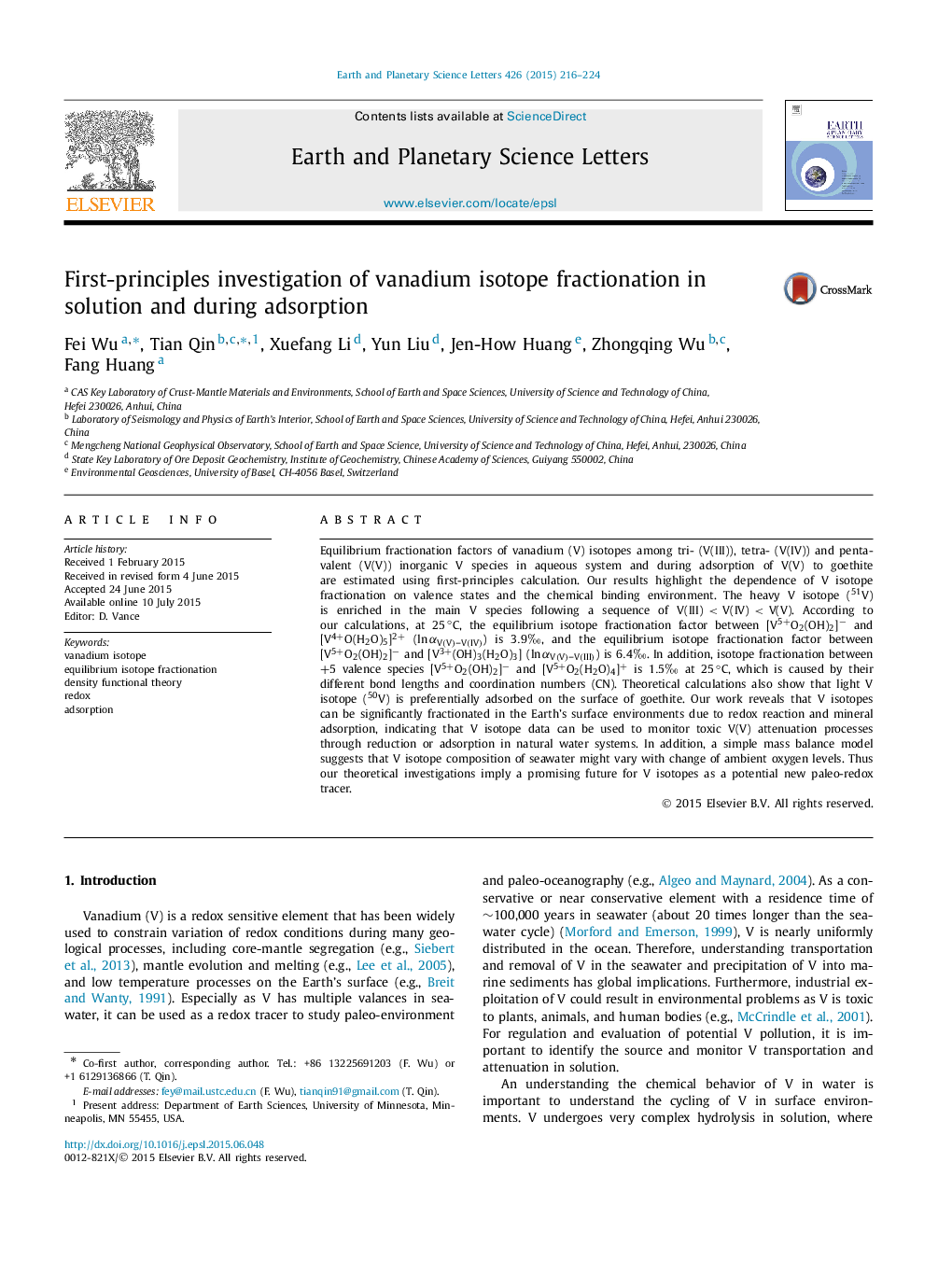| Article ID | Journal | Published Year | Pages | File Type |
|---|---|---|---|---|
| 6428135 | Earth and Planetary Science Letters | 2015 | 9 Pages |
â¢Equilibrium V isotope fractionation factors of V species in solution or adsorbed on goethite surface are calculated.â¢Redox state and mineral adsorption are important factors controlling equilibrium V isotope fractionations.â¢V isotopes can be used to monitor toxic V attenuation processes in solution and a new paleo-redox tracer.
Equilibrium fractionation factors of vanadium (V) isotopes among tri- (V(III)), tetra- (V(IV)) and penta-valent (V(V)) inorganic V species in aqueous system and during adsorption of V(V) to goethite are estimated using first-principles calculation. Our results highlight the dependence of V isotope fractionation on valence states and the chemical binding environment. The heavy V isotope (51V) is enriched in the main V species following a sequence of V(III) < V(IV) < V(V). According to our calculations, at 25â°C, the equilibrium isotope fractionation factor between [V5+O2(OH)2]â and [V4+O(H2O)5]2+ (lnâ¡Î±V(V)-V(IV)) is 3.9â°, and the equilibrium isotope fractionation factor between [V5+O2(OH)2]â and [V3+(OH)3(H2O)3] (lnâ¡Î±V(V)-V(III)) is 6.4â°. In addition, isotope fractionation between +5 valence species [V5+O2(OH)2]â and [V5+O2(H2O)4]+ is 1.5â° at 25â°C, which is caused by their different bond lengths and coordination numbers (CN). Theoretical calculations also show that light V isotope (50V) is preferentially adsorbed on the surface of goethite. Our work reveals that V isotopes can be significantly fractionated in the Earth's surface environments due to redox reaction and mineral adsorption, indicating that V isotope data can be used to monitor toxic V(V) attenuation processes through reduction or adsorption in natural water systems. In addition, a simple mass balance model suggests that V isotope composition of seawater might vary with change of ambient oxygen levels. Thus our theoretical investigations imply a promising future for V isotopes as a potential new paleo-redox tracer.
